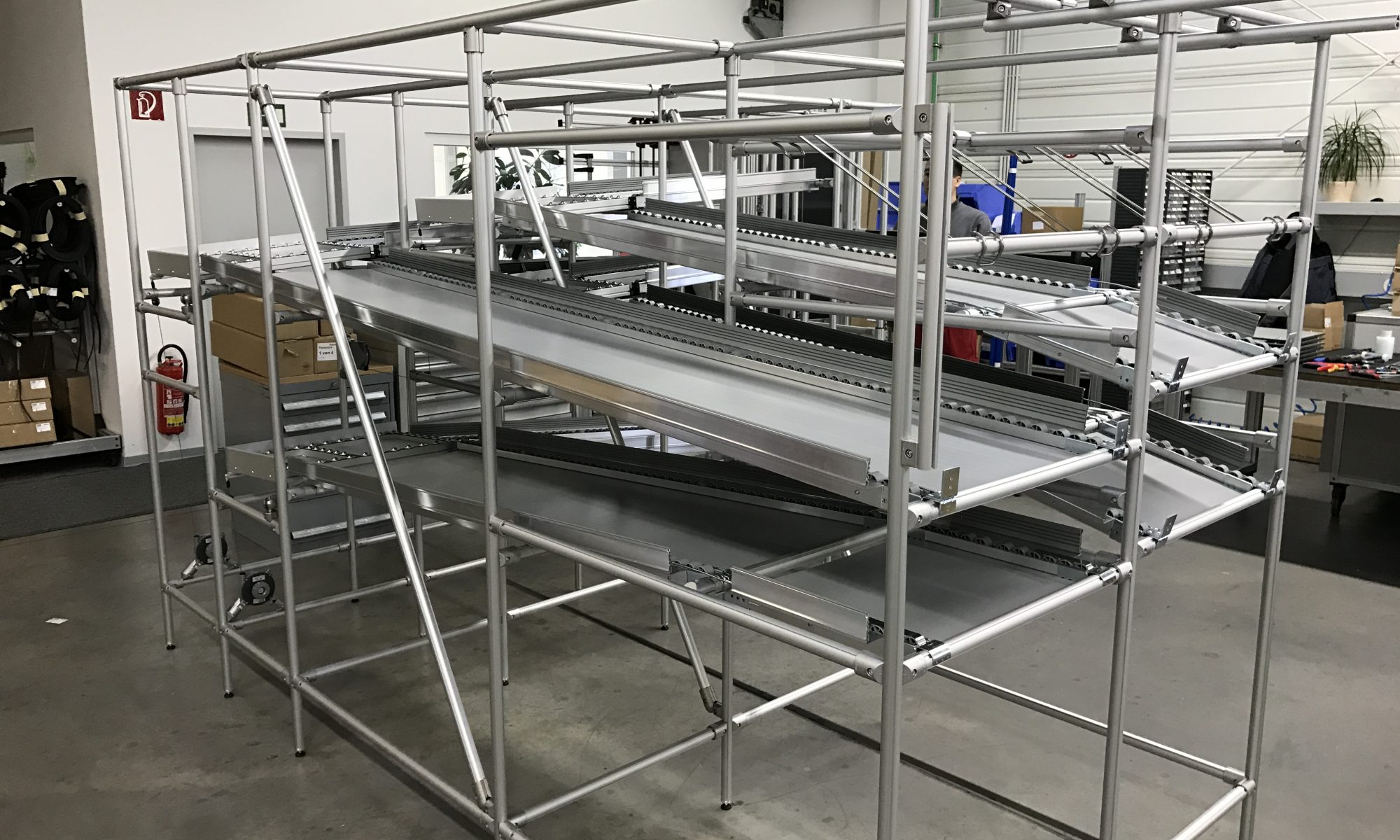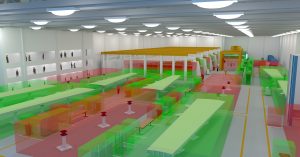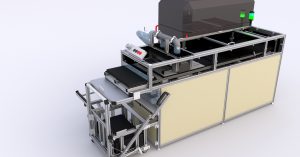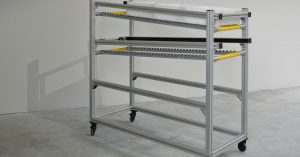How material supply and picking for coolant pump assembly is benefiting from low-cost automation.
We have already dealt with the history and basic principles of Karakuri/LCA in another post. It is a form of automation that is based solely on mechanical energy and thus requires no support (for example from drives of any kind). Now we turn to the practical side of things – using the example of an item solution developed for NIDEC GPM GmbH. Based in Merbelsrod in the Thuringia region of Germany, the company is one of the leading manufacturers of water, oil and transmission fluid pumps. NIDEC GPM’s customers include many renowned car manufacturers such as VW, Daimler and Jaguar.
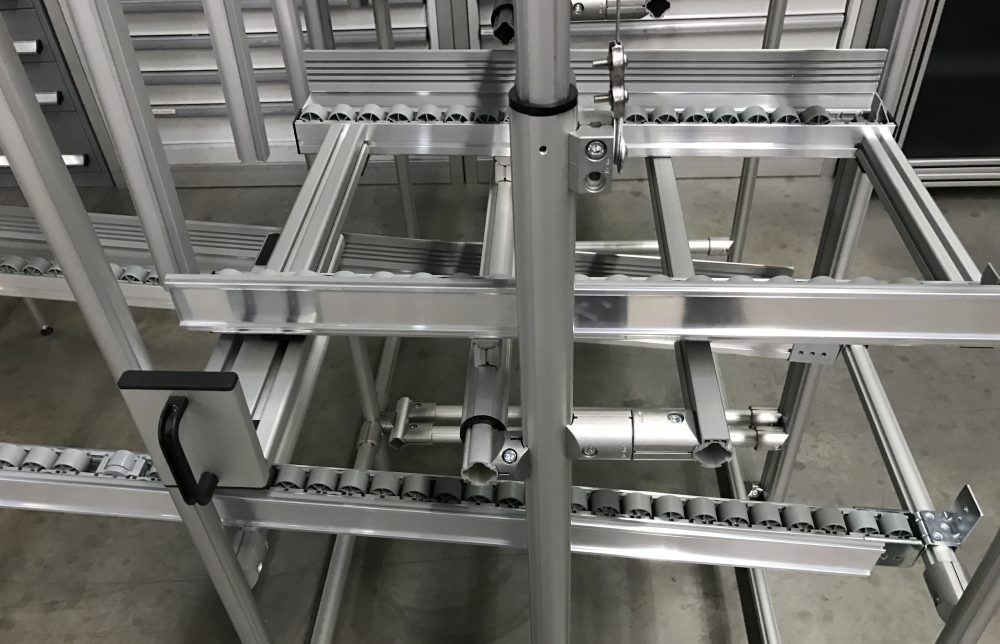
Lean production with item
The primary aim of this measure was to ease the load on the company’s logisticians, who had previously had to lift goods uncomfortably in and out of racks during material supply and picking operations. Whenever a tray was empty, they immediately had to re-stock, or – if the logisticians were occupied elsewhere – the operators had to stop what they were doing and take care of that themselves. This is where a customised Karakuri/LCAsolution for low-cost automation from item comes in – and it even goes around corners.
The logistician uses a pulley to move the workpiece carriers into one of the three lanes in the special rack construction. Thanks to the sloping design and roller conveyor, everything stays in motion. The workpiece carriers containing the individual parts for the coolant pumps are transported without any additional outside influence straight to the operators, who can later forward them on to the assembly line for the coolant pumps.
They can work on the piece for four or five hours before the logistician has to re-stock.
The Karakuri/LCA rack is an improvement for the operators, too, as they receive the parts they require at an ergonomic height. The Karakuri/LCA solution also enables them to work autonomously for several hours. “They can now work on the piece for four or five hours before the logistician has to re-stock them,” says Tobias Kieser, head of work scheduling. This is important because the assembly system is fully automatic, and therefore has to be constantly fed by the operator, who gathers the empty trays afterwards, sending them back via the return system so that the logistician can pick them up. This takes material supply and picking to the highest level of efficiency. Optimising processes while also lightening the load is one of the core tenets of the Karakuri/LCA mindset. Would you like to know more about Karakuri/LCA? You can deepen your knowledge in a special online training at the item Academy.
Karakuri/LCA = lean and ergonomic
As a subsidiary of the Japanese NIDEC Corporation, the lean philosophy is already firmly established in the central principles of the company. Tobias Kieser is committed to this approach: “We are always working to apply the lean philosophy in new areas and develop ourselves, in line with the principle of continuous improvement.” What’s more, efficiency is a top priority in the automotive sector.
Employee welfare is equally important at NIDEC GPM, however, which means ergonomic principles are also taken into account. Efficiency and an ergonomic approach complement each other perfectly in lean production. In this regard, Karakuri/LCA in particular is perfect for this corporate profile and the associated requirements, as Kieser says, “Karakuri/LCA accommodates ergonomics very well.”

Trusting collaboration
Even before the start of the Karakuri/LCA project, NIDEC GPM GmbH was already very familiar with our profile technology, having used it in existing systems and machinery. It became aware of this item product segment during a lean production training course, when the trainer presented two of our lean solutions. Kieser then contacted our sales department, and soon after that the two partners started to look into the issue together.
The fruitful discussion that followed resulted in the supply solution described above. Kieser has nothing but praise for how the project was run and the effectiveness of the Karakuri/LCA rack: “Everything has worked incredibly well and without a hitch.” As a result, a follow-up project is already under way. Once again, the aim is to ensure operators receive parts at the ergonomically correct height and with very little effort. Things are a bit more complicated this time, however, as the Karakuri/LCA solution has to navigate several corners.

Do you want to keep up to date about innovative solutions from item? Then we have something that might just help – simply subscribe to the item blog by completing the box at the top right!

